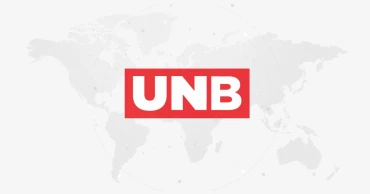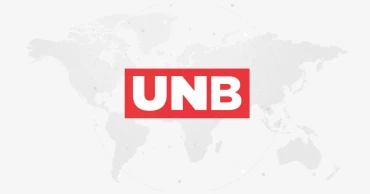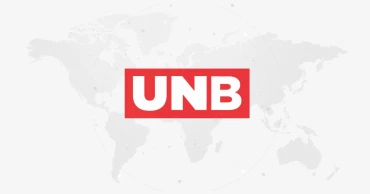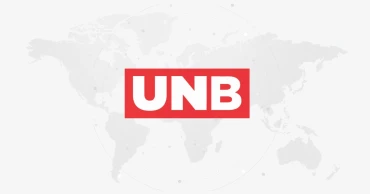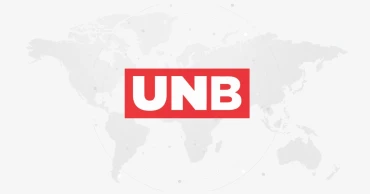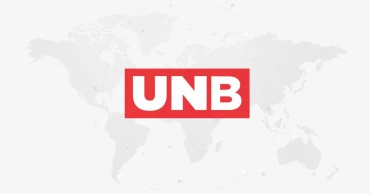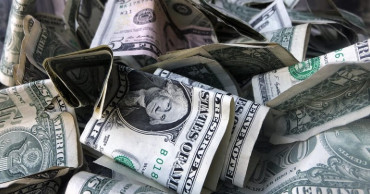Dollar
BB-Dollar: Taka loses 12.72% value in 2024 as dollar strengthens
The Bangladesh Bank (BB) increased the US dollar exchange rate by Tk12 in 2024, resulting in a 12.72% depreciation of the local currency, the taka, over the year.
A central bank data analysis shows that the central bank fixed the dollar exchange rate at Tk122 on December 31, compared to Tk110 in January 2024. This indicates a Tk12 increase in the dollar's price and a corresponding 12.72% loss in the taka's value.
Bangladesh has been struggling with a dollar crisis for three consecutive years, driving up the dollar's price and weakened the taka further.
Meanwhile, banks have also increased the dollar price by Tk2 for both buying and selling. Later, the taka's value dropped by another Tk2. Banks will now sell the dollar to customers for sectors such as imports, loan repayments, and others at a maximum rate of Tk122.
Bangladesh Bank increases crawling peg rate by Tk 2
Ashraf Ahmed, former president of the Dhaka Chamber of Commerce and Industry (DCCI), noted that the banks' move to raise the dollar price will escalate import costs. As a result, the price of imported goods will rise since more money is needed to pay for them, he said.
Talking to UNB, Dr Tawfiqul Islam Khan, Senior Research Fellow at the Centre for Policy Dialogue (CPD), highlighted the inflationary impact of the taka's depreciation. The devaluation by Tk2 means that the prices of goods will inevitably increase. This, coupled with the rising cost of imported goods, will add further pressure on inflation, he pointed out.
11 months ago
Bangladesh Bank identifies reasons behind increased dollar demand
Bangladesh Bank (BB) has identified several factors contributing to the rising demand for US dollars, leading to volatility in the foreign exchange market.
In a statement released on Monday, Husneara Shikha, Executive Director and Spokesperson of the central bank, mentioned that December traditionally witnesses heightened dollar demand due to year-end obligations.
“The repayment deadlines for various foreign loans and deferred payments typically fall in this month, contributing to increased pressure on the market,” she explained.
Number of Tk 1 crore and above account holders drops after political changeover: BB report
Besides, she said, the central bank’s decision to cease dollar sales in the interbank market to meet International Monetary Fund (IMF) targets has further tightened supply.
The central bank also acknowledged the impact of Bangladesh’s downgraded credit rating, which has strained correspondent banking relationships with foreign institutions.
This, in turn, has impeded the opening of Letters of Credit (LCs), delayed the maturity of deferred payments, and disrupted the flow of offshore banking loans.
A recent BB directive requiring foreign debt repayments by December has added further pressure to the already strained market.
BB drafting separate rules for Islamic banking; ‘bankers divided’
Shikha also pointed to inefficiencies in remittance collection, citing monopolistic practices and the involvement of intermediaries as destabilising factors. “The role of aggregators in remittance collection has significantly affected exchange rate stability,” she said.
Commercial banks have been struggling with mismatches between dollar inflows and outflows, exacerbating market volatility.
The central bank assured stakeholders that it is closely monitoring the situation and working to stabilise the market while ensuring compliance with its broader economic objectives.
1 year ago
Top 10 Strongest Currencies in the World as of May 2024
From ancient barter systems to today's sophisticated economies, currency remains the universally accepted medium of exchange. Over centuries, currency has evolved into fiat money, raising questions about how national currencies are valued and which are the strongest globally. Let's explore the ten most valuable currencies as of May 2024.
What is Currency Strength?
The strength of a currency is determined by the purchasing power of the said currency relative to other currencies.
The strength of a currency is calculated through a benchmark (typically USD). For example, if the value of BDT decreases relative to USD, it means that the purchasing power of BDT will fall resulting in depreciation. On the contrary, an increase suggests greater purchasing power and currency appreciation.
Read more: Bangladesh's foreign exchange reserves fall below 20 bln USD
How are Currencies Valued?
The value of a currency is determined in the forex market. The price of one currency in terms of another is called the exchange rate. Exchange rates are determined by supply and demand forces in the market.
But beyond the concept of supply and demand, other factors like economic growth and stability, central bank policies, global trade flows, and market speculation play a huge role in determining the value of a currency.
Historically, the USD enjoyed a strong valuation due to a positive combination of the above factors. Today the USD is the primary reserve currency of the world as many central banks and international institutions hold significant reserves of US dollars for international trade and investment purposes. The Triennial Central Bank Survey conducted by the Bank for International Settlements (BIS) found that the USD was one side of 88% of all forex transactions between 2019 to 2022.
Read more: Explainer: What it means to let taka float
Top 10 Most Valuable Currencies in the World As Of May 2024
Kuwaiti Dinar (KWD)
The Kuwaiti Dinar is the strongest currency in the world with 1 KWD buying 3.26 USD. The KWD is a relatively new currency introduced in the 1960s.
The currency was initially pegged with the British Pound but later re-pegged to an undisclosed basket predominantly focusing on the USD. Like most Middle Eastern countries, the KWD draws its strength from global oil exports.
Bahraini Dinar (BHD)
Bahraini Dinar comes in second with 1 BHD buying 2.66 USD. The BHD was founded in 1965 and has since been pegged to the USD.
Bahrain, being a small island nation in the Persian Gulf draws much of its currency strength from the large oil and gas exports. Additionally, the country has diversified its economic interests to include financial services, tourism, manufacturing, and logistics. The sound monetary policy, strong reserve, and a stable political environment also play into BHD’s strength.
Read more: Bangladesh Bank introduces Crawling Peg System; dollar rate set at Tk 117 with immediate effect
Omani Rial (OMR)
The Omani Rial is the third strongest currency in the world. 1 Omani Rial can be bought for 2.60 USD. The OMR was founded in 1970 and has since been pegged with the USD.
The geographic position of Oman as a Gulf nation has endowed it with massive oil and gas reserves. In addition to the oil and gas exports, the Omani Central Bank has been prudent in formulating fiscal policies. The political stability and FDI inflow combined with a short supply of OMR have been key determinants for its strong position.
Jordanian Dinar (JOD)
Moving away from oil-rich economies, the Jordanian Dinar holds the fourth place among the strongest currencies in the world. 1 Jordanian Dinar is equivalent to 1.41 USD.
Jordan has historically been a politically stable country even though it is positioned in a geographically tense territory. The currency, since its foundation in the 1950s, has been pegged to the USD. The country undertook reform measures to liberalize trade, streamline regulations, and enhance the business environment. Besides, a strong foreign aid and remittance environment also aided JODs strength.
Read more: BB introduces US dollar and currency (Taka) swap for commercial banks
British Pound (GBP)
With over 600 years of history, the British Pound is one of the oldest and strongest currencies in the world. 1 GBP currently buys 1.26 USD. The British Pound is not pegged to any other currency.
Throughout much of the 19th and middle of the 20th century, the GBP was the primary reserve currency of the world. To this day, the GBP takes a minor position right after the USD. Historically, the UK had a strong GDP growth rate with the Bank of England strongly regulating the monetary policies. The high trade balance and foreign investment inflow have worked in favor of the GBP’s position.
1 year ago
Airlines operating in Bangladesh must determine airfare in taka instead of dollar from July 1
The Bangladesh government has decided to use the local currency, taka, instead of US dollar to determine airfare for carrying passengers and transporting goods from home to abroad — effective from July 1 this year.
The decision was announced in a circular signed by the deputy secretary of the Civil Aviation and Tourism Ministry recently.
Following the directive, all local and foreign airlines operating in the country will have to determine airfare in taka instead of dollars.
Read more: Reduce airfare on Middle East routes: Baira
Bangladeshi airlines outside the country have been setting airfare in the currencies of those countries, so airfare in Bangladesh should be in taka too, according to the circular.
With the Finance Ministry’s consent, the move was taken on the basis of approvals from the authorities concerned later.
2 years ago
Pakistani rupee reaches record low against USD
Pakistani rupee suffered a big blow against the U.S. dollar as the greenback was traded at a historic low of 285.09 rupees in the interbank market on Thursday, according to the State Bank of Pakistan.
It marks a 6.66-percent drop from Wednesday's closing price of 266.11 rupees.
Talking to Xinhua, Khurram Schehzad, chief executive officer of Alpha Beta Core, a Pakistani financial advisory and investment strategy firm, said that the core reason for this dramatic fall is the lack of confidence in the market.
Uncertainty arose as Pakistan's International Monetary Fund program is still pending, he said, adding that the country's foreign exchange reserves are also shrinking due to the near future debt repayments.
2 years ago
Bangladesh received $1.96 billion in remittances in January amid dollar crisis
The inward remittance flow in January came as good news while Bangladesh Bank (BB) is struggling with LCs liabilities to import essential commodities and industrial raw materials amid volatile foreign exchange supply.
In January, Bangladesh received $1.96 billion in the legal channel, the BB updated data revealed on Wednesday. In December, the remittance was $1.69 billion.
Bangladesh received $12.45 billion inward remittances in seven months (July-January) in the current fiscal year 2022-23.
Read More: Banks to stop charging any fees for handling remittances.
Bank officials said many import payments are being deferred due to the dollar crisis. For this, expatriate income of dollars are being bought at a higher price than the fixed price.
As a result, expatriate income increased. If the price limit of the dollar is removed, the crisis will go away, they said.
The BB spokesperson Mesbaul Haque told UNB that in order to increase remittance inflow, the central bank has increased the exchange rate of US dollars for remittance.
Read more: Bangladesh Bank simplifies receiving remittance
In addition to a 2.5 percent hassle-free incentive for remittance, several banks also provide additional incentives to attract foreign exchange, he said.
Banks will not cut any charge or fee for sending remittances in the legal channel, he said.
Research by Bangladesh Bank found that more than 40 percent of remittance of expatriate income is sent to the country through hundi.
Read More: Bangladesh 9th in remittances with US$ 15.9b: World Bank.
2 years ago
Remittance: Bangladesh Bank tells banks to provide Tk 107 per dollar
Bangladesh Bank has asked banks to provide Tk 107 per US dollar inward remittance.
A remitter will now get Tk 107 per dollar, even if they send remittance directly through banks.
Currently, remitters are getting Tk 99.5 per dollar through the banking channel. Remittance flow through banks fell drastically in September and October.
Read more: Bangladesh Bank will go slow in calculating reserves following IMF formula
Apart from this, the banks will not charge any fee for remittance collection from now on. At the same time, in the current reality of foreign exchange reserves, banks have to open LCs with dollar resources from their own sources, Bangladesh Bank said to the commercial banks
These instructions were given on Monday (October 31, 2022) in a meeting between the central bank and the Association of Bankers, Bangladesh (ABB), an association of banks' chief executives, and the Bangladesh Foreign Exchange Dealers’ Association (BAFEDA)
Deputy Governor Ahmed Jamal and Kazi Sayedur Rahman were present at the meeting.
Read more: Bangladesh Bank asks banks to stop ACU transactions with Sri Lanka
ABB Chairman and BRAC Bank Managing Director (MD) Salim RF Hossain, on behalf of the banks, BAFEDA Chairman and Sonali Bank MD Afzal Karim, Mutual Trust Bank MD Syed Mahbubur Rahman, City Bank MD Masrur Arefin and others were present.
Besides, the central bank has asked to increase the number of exchange houses outside the country to encourage remittance collection directly through banks by reducing the dependence on foreign exchange houses. In this case, the central bank will provide the necessary assistance.
Banks have committed to implementing these decisions.
Read More: How to safely send remittance to Bangladesh?
3 years ago
Remitters will get Tk 107.5 per dollar instead of Tk 108 from Oct 1
Expatriate Bangladeshis will get maximum Tk 107.5 per US dollar instead of Tk 108, for remittance from October 1, 2022.
Association of Bankers, Bangladesh (ABB) and Bangladesh Foreign Exchange Dealers’ Association (BAFEDA) have set this rate for remittance next month – to stabilize the forex market.
Economists are saying controlling the exchange rate would have negative impact on the current inward remittance flow.
Read: Bangladesh received over $1 billion remittance in Sep 1-15
Economist and Chairman of PRI, Ahsan H Mansur, told UNB that this is not the right decision to attract more remittance when the kerb market rate is over Tk 114 per dollar.
It may encourage sending money through illegal channels, which does not help in resolving the forex crisis, he said.
Professor Mustafizur Rahman, distinguished fellow of CPD, also said that controlling exchange rate is not helpful when market demand for forex is expanding.
Read:Uniform rate: Tk 108/dollar max for remittance, Tk 99/dollar for export income from tomorrow
He said several rates for US dollar will create discrepancies and discourage remittance flow.
The illegal sector will be encouraged while exchange rate difference between banks and kerb market will be widened, Prof. Mustafizur said.
According to the decision of the meeting held on Monday, remitters will get maximum Tk 107.5 per US dollar. Earlier on September 11, ABB and BAFEDA fixed the maximum price of a dollar at Tk 108 for remittance.
Read Explainer: What it means to let taka float
The dollar rate of export income monetization will remain at Tk 99 per dollar as before. In the case of payment of import liabilities and inter-bank transactions, price of dollar will be Tk 1 higher than the average price of a dollar bought from expatriate and export earnings.
At the end of the meeting, BAFEDA Chairman Afzal Karim told the reporters, “There was supposed to be a price review from time to time to keep the dollar market normal.”
“In continuation of this, we have decided the new price. The new price will be effective from October 1,” he said.
Read How to safely send remittance to Bangladesh?
3 years ago
Explainer: What it means to let taka float
We are in the middle of the first full working week since Bangladesh’s declared adoption of a floating exchange rate for taka against the US dollar, paving the way for the forces of demand and supply - in a word, the market - to determine the rate going forward.
Bangladeshi officials however, have a history of such utterances, without the necessary follow up actions. Most famously perhaps, there is even a formal commitment from 2003 (Bangladesh Bank. Exchange Rate Circular No. 01, 2003 – still available on the BB website), that the central bank subsequently abandoned.
As a result, for almost its entire existence as a sovereign currency, taka’s value has been artificially set by the country’s monetary authority, i.e. Bangladesh Bank, and then allowed to float within a certain band - the so-called managed or ‘dirty’ floating exchange rate.
Read: Banks reschedule loans worth nearly Tk 6000 crore, waive Tk 2800 crore in interest in first 6 months of 2022
In order to maintain the rate at or near its preferred level, the central bank would intervene in the currency markets to buy or sell dollars as the intervention currency. Maintaining an artificially overvalued rate in comparison to the market value, as Bangladesh Bank has almost always done, necessitates selling dollars from its foreign exchange reserves.
Why now?
But the “strongest dollar in a generation”, witnessed over the last year or so and likely to persist well into the foreseeable future, was starting to make the dirty floating system very expensive to maintain for Shapla Chattor, rapidly depleting its reserve of dollars.
In the 2021-22 fiscal, that ended on June 30, Bangladesh Bank spent $7.62 billion from the country’s foreign exchange reserves as it scrambled to slow down taka’s slide against what some are calling “the hideous strength of the dollar.” In the first two months of the current fiscal, July-August, that coincided with a period in which even the government was forced to recognise the impacts of a range of worrying signs for the economy, it escalated dangerously.
Read: Bangladesh received over $1 billion remittance in Sep 1-15
During this period, the central bank spent a further $2.85 billion on shoring up its preferred, overvalued rate, or rates, as it kept stretching to hold on, for taka against the dollar. If you annualise that, you’re looking at spending over $15 billion over the course of the fiscal. Probably more, with all the signs being that US Federal Reserve policies are likely to strengthen the greenback further over the foreseeable future.
At a time when the quite rapid depletion of the forex reserves from its peak of $48.1 billion in August 2021 to some $37 billion at the moment has become a matter of concern (and the IMF
credibly contending that effectively it is a further $7 billion less), the central bank has been forced to realise it is unsustainably costly to hold on. It has to let taka float.
Read Uniform rate: Tk 108/dollar max for remittance, Tk 99/dollar for export income from tomorrow
Does it mean BB will not sell dollars again?
What that basically means is to adopt a hands-off approach. To refrain from using its intervention tools. Importantly though, it doesn’t give up its authority to do so. It may become interventionist again, at any point - unless it gets to a point where you are charged as a ‘currency manipulator’, as the US did with China in 2019, there is nothing really to give you pause even, once you decide to do it. There is nothing to bind you to ‘letting it float’.
And central banks can be clingy. There are no purely floating currencies, it’s all a bit relative. Canada has had a floating exchange rate for longer than any other country. The Canadian national bank has not interfered with its dollar’s price since 1998. The US dollar is a close second. By contrast, Japan and the UK intervene to a greater extent, and India has medium-range intervention by its national bank, the Reserve Bank of India.
What kind of exchange rate regime a country maintains over a given period is actually a call that can only truly be made after the event, when you have the data to tell you to what extent there may or may not have been intervention. It’s a bit like assessing whether you’ve been faithful in a relationship or not - you cannot have it up front. You have to look back.
Read ABB, BAFEDA will meet tomorrow to set uniform dollar rate for banks
But a commitment can be important, and the closest thing resembling such a commitment for Bangladesh Bank that suggests it is preparing to go further this time than it has gone before to letting the currency float came last week: for the first time, Shapla Chattor appeared to accept a suggested rate from the market, along with a mechanism for determining it on a regular basis going forward.
What is the market rate?
The task for coming up with the market-determined exchange rate had been left to the Bangladesh Foreign Exchange Dealers' Association (Bafeda), in consultation with the Association of Bankers Bangladesh (ABB). After months of meetings between the three parties, last week (September 11), the rate put forward by them, along with a mechanism - a weighted average based on actual transactions over the previous 5 working days - was accepted by Bangladesh Bank in a meeting, and subsequently announced.
Since September 13, this rate has been published on the BB website as the nominal rate for the dollar, along with the following note: “Exchange rates of Taka for inter-bank and customer transactions are set by the dealer banks, based on demand-supply interaction and indicative rates suggested by Bangladesh Foreign Exchange Dealers' Association. Bangladesh Bank is not in the market on a day-to-day basis, and undertakes USD purchase or sale transactions with dealer banks only as and when needed to maintain orderly market conditions.”
Read Foreign exchange rate stable after Bangladesh Bank tightens spending
Note the phrase "as and when needed" - it tells you that should the need arise (most likely if the government perceives taka has depreciated too much), the central bank still reserves the right to intervene and effectively override what it has committed to.
There will be teething issues - reports suggest Bangladesh Bank is still selling dollars, but if it stays the road, this will taper down. There are criticisms of the agreement entered into with BAFEDA, in particular how it creates three different dollar rates - one for exporters, one for remitters and one for importers. And leaving the exchange rate to the market while holding on to a fixed interest rate regime (interest rate on lending is currently capped at 9%) goes against conventional wisdom in economics. These are issues we will get to explore in future.
Explainers related to the economy are vetted by economists.
Read BB eases outward remittance rules for foreigners
3 years ago
Uniform rate: Tk 108/dollar max for remittance, Tk 99/dollar for export income from tomorrow
Association of Bankers, Bangladesh (ABB) and Bangladesh Foreign Exchange Dealers’ Association (BAFEDA) have announced a uniform rate for buying and selling US dollars from foreign exchange houses, following Bangladesh Bank’s decision to keep the currency market stable.
The exchange rate of dollar for inward remittance will be maximum Tk 108 from tomorrow (September 12, 2022). Traders will get a maximum Tk 99 per dollar in terms of export income. And in case of opening import LC, the exchange rate will be determined by averaging the exchange rate of remittance and export.
Md. Afzal Karim, chairman of BAFEDA and managing director of Sonali Bank, announced the exchange rate after a meeting with ABB leaders today.
Also read: ABB, BAFEDA will meet tomorrow to set uniform dollar rate for banks
The dollar kerb market has become unstable again after an interval of around 20- 25 days.
Today, the US dollar was selling at Tk 114 to 114.5 in the kerb market while banks sold dollars for LC at Tk 101 to 106. Bangladesh Bank sold dollar at Tk 95 today.
A syndicate is trying to create instability in the foreign exchange market again – to gain profits from illegal dollar stock, economic intelligence reported to the central bank, a director of the latter told UNB.
Read How to safely send remittance to Bangladesh?
The report stated, “Banks’ rate of dollar increased while kerb (open) market became unstable. Taking advantage, cash dollar traders are making a profit.”
Talking to various commercial banks and exchange houses, the UNB correspondent learnt that a dollar is being sold at Tk 114 in Motijheel, Dilkusha and Gulshan areas of the capital.
The commercial banks are taking Tk 101 to 106 per dollar at the import level. And cash dollar is selling at Tk 106 to 108.
Read Bangladesh performing well in 3 major economic indicators, data shows
Earlier, the dollar rate rose to Tk 120 in the kerb market on August 10 and 11 this year.
President of Money Exchangers’ Association of Bangladesh, AKM Ismail Haque, told UNB, “The price has not increased much. Today, we are buying dollars at Tk 106 and selling at Tk 107.5.”
When asked about selling at Tk 113 to Tk 114, he said that legitimate people do not sell dollars at a higher prices.
Also read: Illegal dollar trade: BB summons account details of 28 exchanges
According to earlier decision, the banks will determine price of the dollar. The price of dollar will be different in every transaction, including remittance, export earnings, and import bill settlement. But the banks will buy and sell dollar at the same price in different segments. And the maximum profit in trading per dollar will be Tk 1.
3 years ago



